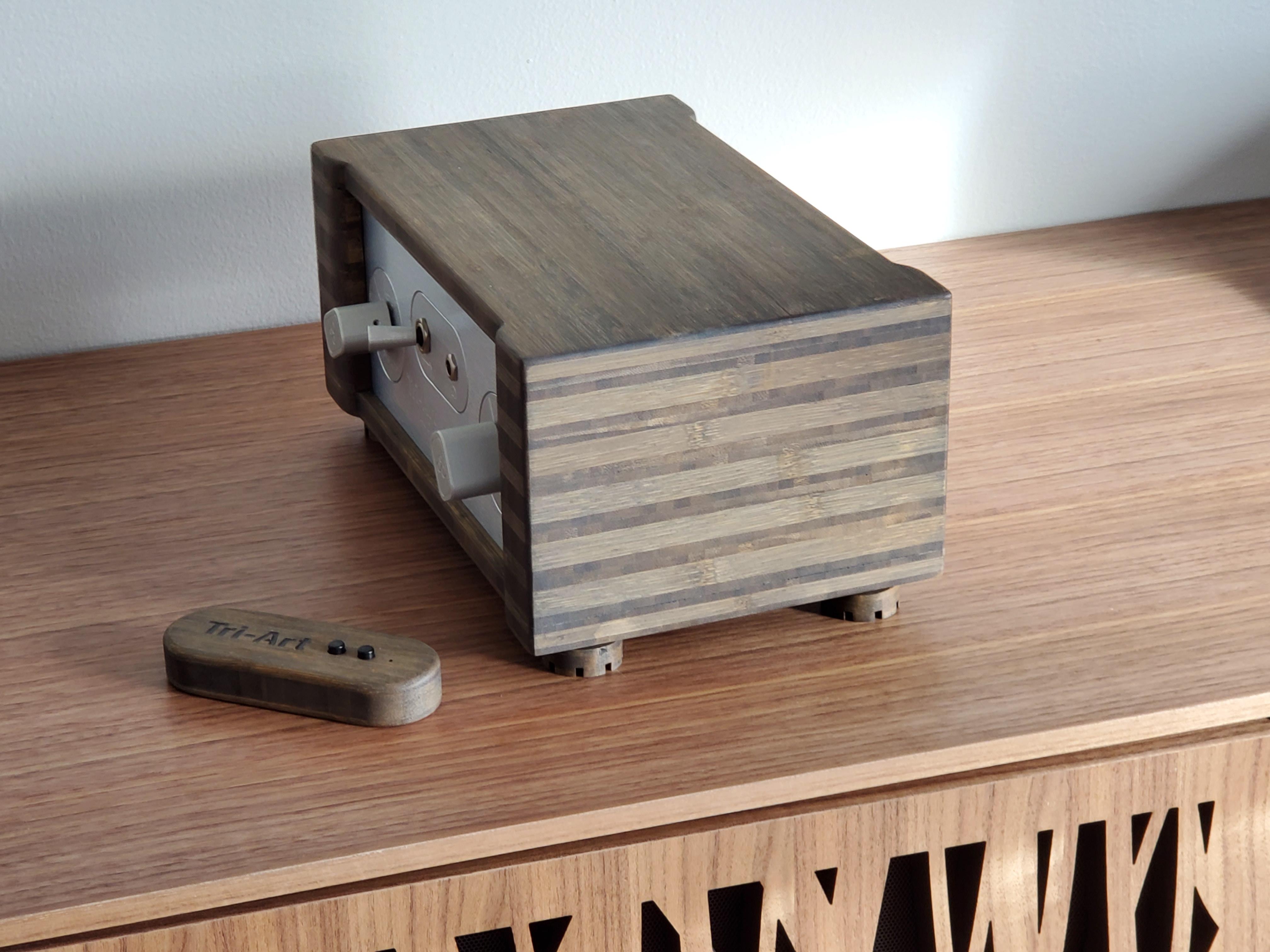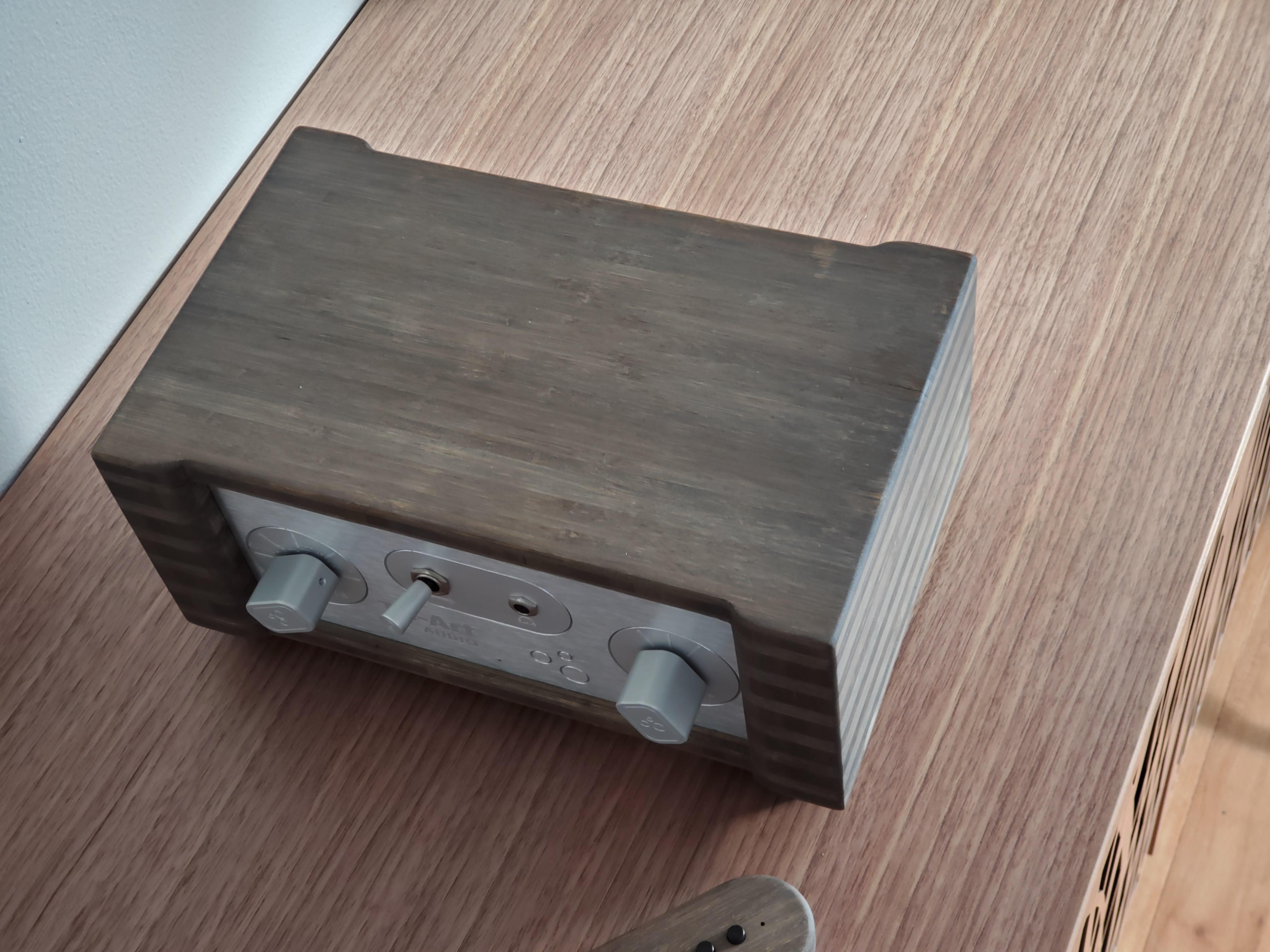
1 minute read
TRI-ART P-SERIES INTEGRATED
and musical as its headphone amplifier, if not more. There were many late nights when listening to the Tri-Art PSI at low volume, time and again, overpowered the necessity to review (as a deadline neared). To offer so much at its $995 to $1,500 asking price (distressed finish) is truly astonishing. I shake my head even now
Border Patrol SE-i DAC, the DENAFRIPS Pontus II DAC, the Tr-Art OPEN 5, and the Verity Otello speakers. Cabling was ANTICABLE. Power conditioning was handled by Audience.
Advertisement
As the OPEN 5 is much closer to the TriArt PSI, I used the OPEN 5 for the great recreation—horizontal positioning, layering, relative space, air and ambiance—are all very good and far more than you’d expect from an integrated at this price point. Value? Absolutely!
The Tri-Art PSI was partnered with the Silent Angel Munich M1 & Forester F1, the measuring 15.25’ x 31’ x 10’, with hardwood floors muted by carpet and padding, a slotted absorption/diffusion oriented console from BDI, angled blinds, and overstuffed furniture, tamed the room well and allowed the sound to remain vibrant and alive. a bit more complex as it is, first, susceptible to the loudspeaker’s limitation and secondly, to the room in which the loudspeakers live. These are conditions that its headphone amplifier, affixed to a pair of headphones, does not suffer. That said, and with its related kin—Tri-Art OPEN 5—with a low end that begins its “drop” at or around 35Hz, the sub-bass strata (read near 20-25Hz), is hard to reach, and given the OPEN 5’s true sensitivity (review coming), low bass was virtually impossible. This fact excused the Tri-Art PSI from playing Eiji Oue’s “Infernal Dance of King Kashchey” (Stravinsky, Reference Recordings), as a much more sensitive speaker was needed, true to its specifications. I’ll revisit this shortly. However, Marcus Miller’s Power (M2, Concord) and Christian McBride’s “Fat Bach subterranean searches for the Holy-BassHead-Grail, provided good tight, transparent, and well resolved bass, which was transient quick and rollicked and rolled, befitting of a much more expensive integrated.

Midrange
In this particular case, I returned to three vocal pieces that always tell on a piece of equipment for what it can discern and what it cannot. While the pieces are well recorded, there are segments within that can “hide” from less talented components and even from some quite talented components. Olafur Arnalds’ “Árbakkinn” (Island Songs, Mercury (Universal France)) begins with the poetry of Einar Georg Einarsson and birdsongs captured from outside the recording studio,







